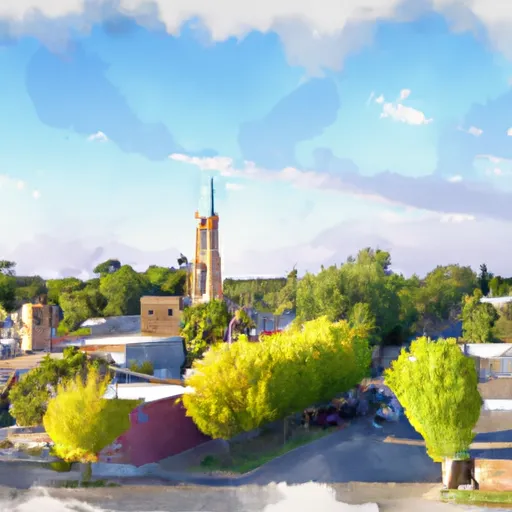-
 Snoflo Premium
Snoflo Premium
Get unlimited access to all our content
With no Ad interruptions! - Start Your Free Trial Login with existing account
Lodi
Eden Index
Climate
9.3
•
Recreation
2.2
•
Community
2.8
•
Safeguard
5.2/10

Lodi, California is a charming city located in San Joaquin County. It is known for its warm Mediterranean climate, characterized by hot and dry summers and mild winters. Summers in Lodi reach average temperatures of around 90°F (32°C), while winter temperatures hover around 55°F (13°C). The region experiences low rainfall, with an average annual precipitation of about 17 inches.
Situated alongside the Mokelumne River, Lodi benefits from the hydrology constituents of this water body. The river serves as a source of irrigation for agriculture, including the vast vineyards that the region is famous for. The river also provides opportunities for recreational activities such as fishing and boating.
Lodi offers a variety of outdoor recreation opportunities. The nearby Lodi Lake Park is a popular spot for boating, kayaking, and picnicking. Nature enthusiasts can explore the Cosumnes River Preserve, which features diverse wildlife and scenic trails for hiking and birdwatching. Lodi is also renowned for its numerous wineries, offering wine tasting tours and festivals throughout the year. With its pleasant climate, hydrological resources, and outdoor attractions, Lodi is an ideal destination for nature lovers and wine enthusiasts alike.
What is the Eden Index?
The Snoflo Eden Index serves as a comprehensive rating system for regions, evaluating their desirability through a holistic assessment of climate health, outdoor recreation opportunities, and natural disaster risk, acknowledging the profound impact of these factors on livability and well-being.
Climate Health Indicator (CHI): 9.3
Lodi receives approximately
471mm of rain per year,
with humidity levels near 72%
and air temperatures averaging around
16°C.
Lodi has a plant hardyness factor of
9, meaning
plants and agriculture in this region tend to thrive here all year round.
By considering the ideal temperature range, reliable water supplies, clean air, and stable seasonal rain or snowpacks, the Climate Health Indicator (CHI) underscores the significance of a healthy climate as the foundation for quality living.
A healthy climate is paramount for ensuring a high quality of life and livability in a region, fostering both physical well-being and environmental harmony. This can be characterized by ideal temperatures, reliable access to water supplies, clean air, and consistent seasonal rain or snowpacks.
Weather Forecast
Streamflow Conditions
San Joaquin
Area Rivers
San Joaquin
Snowpack Depths
San Joaquin
Reservoir Storage Capacity
San Joaquin
Groundwater Levels
Recreational Opportunity Index (ROI): 2.2
The Recreational Opportunity Index (ROI) recognizes the value of outdoor recreational options, such as parks, hiking trails, camping sites, and fishing spots, while acknowledging that climate plays a pivotal role in ensuring the comfort and consistency of these experiences.
Access to outdoor recreational opportunities, encompassing activities such as parks, hiking, camping, and fishing, is crucial for overall well-being, and the climate plays a pivotal role in enabling and enhancing these experiences, ensuring that individuals can engage in nature-based activities comfortably and consistently.
Camping Areas
| Campground | Campsites | Reservations | Toilets | Showers | Elevation |
|---|---|---|---|---|---|
| Rancho Seco Rec Area | None | 252 ft | |||
| Sharpe RV Military | None | 26 ft | |||
| Dos Reis | None | 27 ft |
Nearby Ski Areas
Catastrophe Safeguard Index (CSI):
The Catastrophe Safeguard Index (CSI) recognizes that natural disaster risk, encompassing floods, fires, hurricanes, and tornadoes, can drastically affect safety and the overall appeal of an area.
The level of natural disaster risk in a region significantly affects safety and the overall livability, with climate change amplifying these risks by potentially increasing the frequency and intensity of events like floods, fires, hurricanes, and tornadoes, thereby posing substantial challenges to community resilience and well-being.
Community Resilience Indicator (CRI): 2.8
The Community Resilience Indicator (CRI) recognizes that education, healthcare, and socioeconomics are crucial to the well-being of a region. The CRI acknowledges the profound impact of these elements on residents' overall quality of life. By evaluating educational resources, healthcare accessibility, and economic inclusivity, the index captures the essential aspects that contribute to a thriving community, fostering resident satisfaction, equity, and social cohesion.

